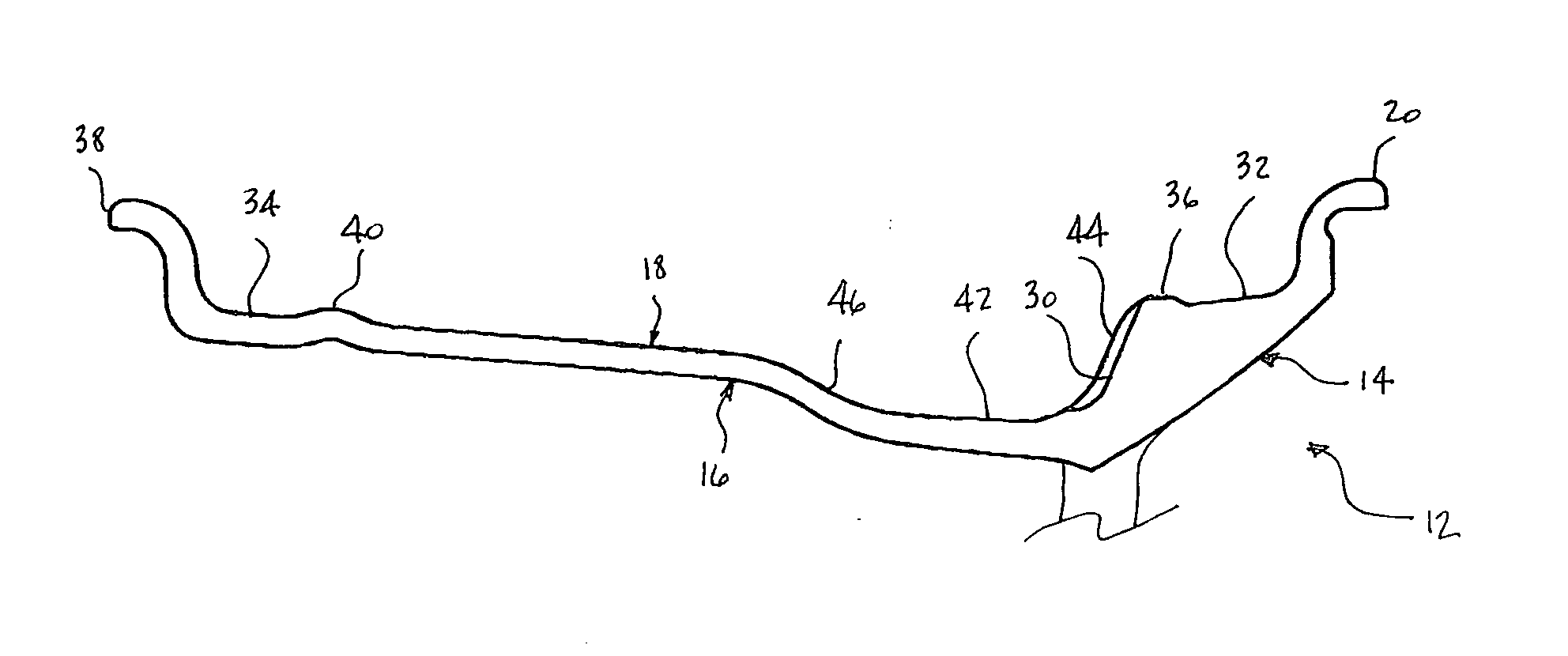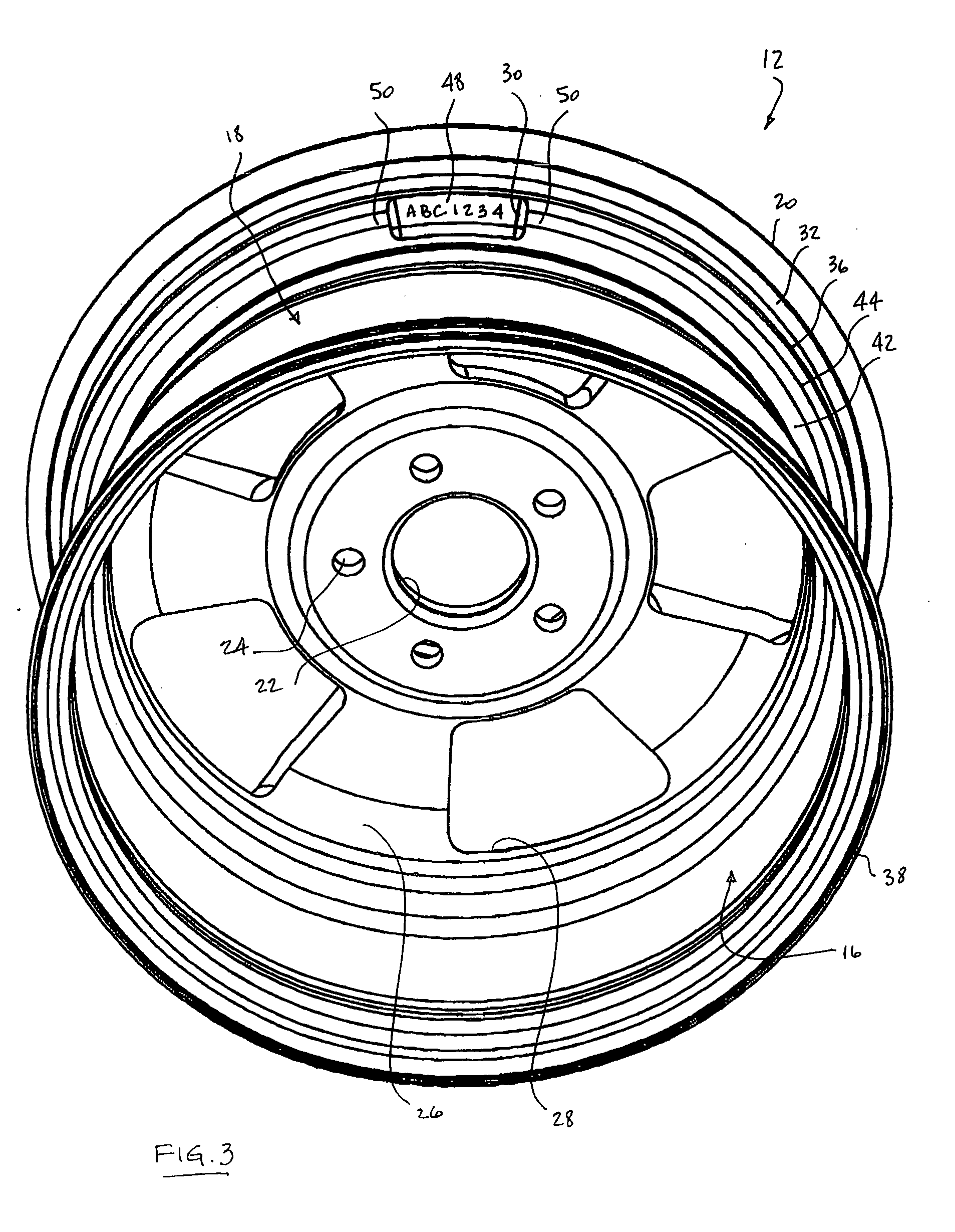Wheel traceability system
a technology of tracing system and wheel, which is applied to disc wheels, vehicle components, rims, etc., can solve the problems of ink stamping, inability to accurately identify the wheel, and inability to accurately mark the wheel, so as to tightly control inventory and quality, and efficiently address quality control problems.
- Summary
- Abstract
- Description
- Claims
- Application Information
AI Technical Summary
Benefits of technology
Problems solved by technology
Method used
Image
Examples
Embodiment Construction
[0018] The present invention provides for the application of a unique identifying marking to an automotive roadwheel as early during the manufacturing process as is practicable and in such a manner so as to ensure that the marking remains legible throughout the balance of the process as well as throughout its service life. By imparting a unique identity to each wheel, the progress of each wheel through its manufacturing process can be monitored, controlled and memorialized and its path through the stream of commerce can be traced. By matching wheel ID with the VIN of the vehicle to which it was mounted, the end user of a particular wheel can be identified, and conversely, the manufacturing history of a particular end user's wheel can be summoned. The following description is directed to one preferred embodiment of the present invention.
[0019]FIG. 1 is a curb-side view of a wheel 12 of the present invention. A roadwheel's curb side 14 is that which is visible when mounted on a vehic...
PUM
 Login to View More
Login to View More Abstract
Description
Claims
Application Information
 Login to View More
Login to View More - R&D
- Intellectual Property
- Life Sciences
- Materials
- Tech Scout
- Unparalleled Data Quality
- Higher Quality Content
- 60% Fewer Hallucinations
Browse by: Latest US Patents, China's latest patents, Technical Efficacy Thesaurus, Application Domain, Technology Topic, Popular Technical Reports.
© 2025 PatSnap. All rights reserved.Legal|Privacy policy|Modern Slavery Act Transparency Statement|Sitemap|About US| Contact US: help@patsnap.com



